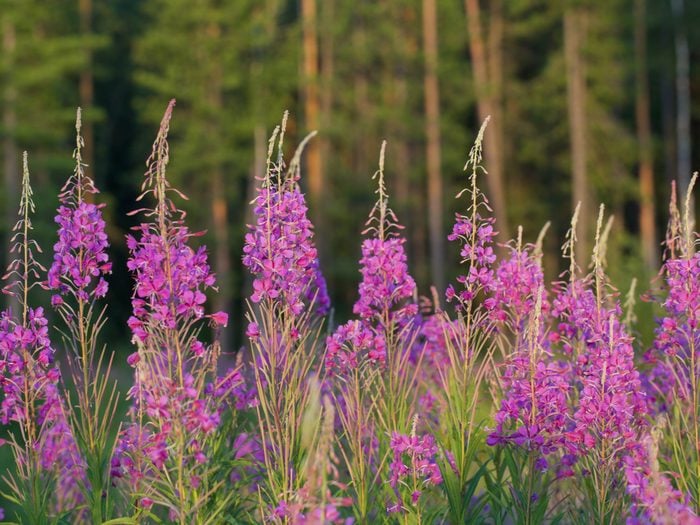
Yukon – Fireweed
Commonly found along roadsides and river bars in the region, the fireweed became Yukon’s floral emblem in 1957. Known for its hardiness, it’s also one of the first plants to appear after forest fires—hence the name.
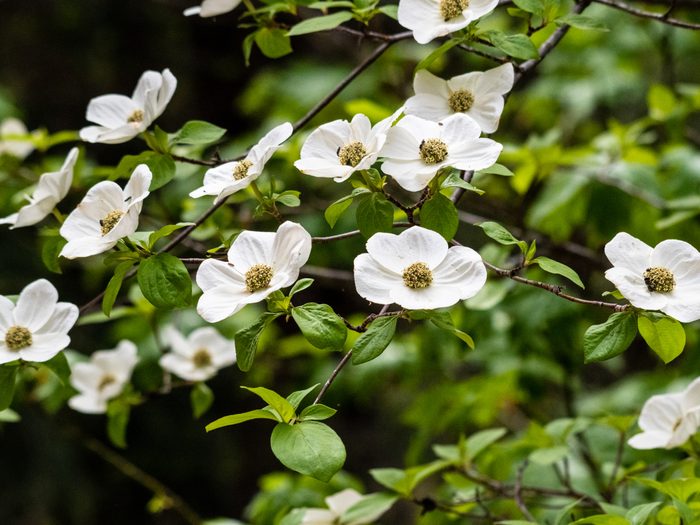
British Columbia – Pacific Dogwood
The instantly recognizable Pacific dogwood technically isn’t a flower, but a tree! Native to the southwest region of the province, it became British Columbia’s floral emblem in 1956. Unfortunately, this pretty species has long been a target of anthracnose, a fungal disease—the Pacific dogwood has declined in numbers in recent years as a result.
Discover 10 essential experiences on Canada’s west coast.
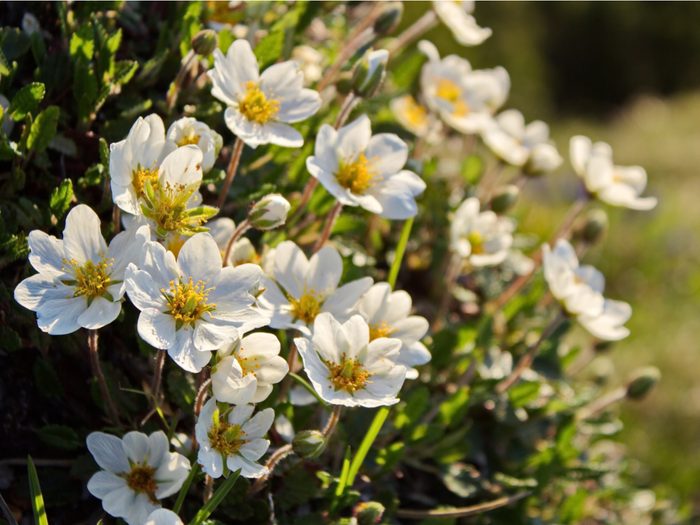
Northwest Territories – Mountain Avens
These attractive plants, which are native to Canada’s western and Arctic regions, became the Northwest Territories’s floral emblem in 1957. While mountain avens are a member of the rose family, they only grow in high, rocky terrain and bloom from June to July.
These hidden gems in the Northwest Territories are worth exploring.
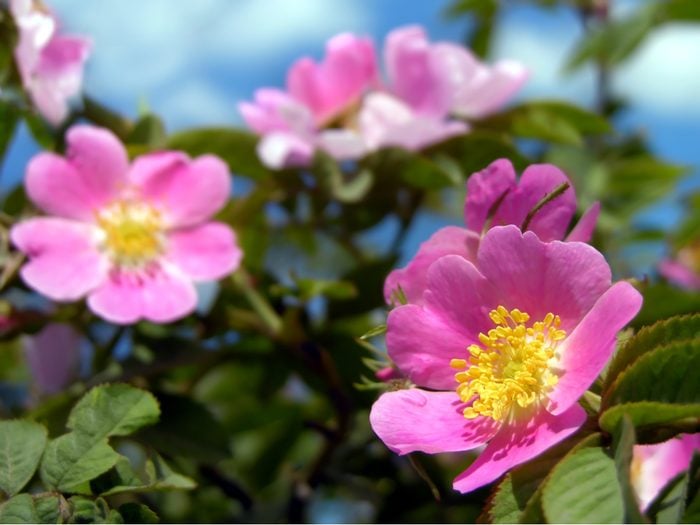
Alberta – Wild Rose
Alberta is one of three provinces to have left the selection of its provincial flower to schoolchildren. Though it grows across Canada, the wild rose was officially adopted to symbolize Alberta’s diversity, history and landscape after its youngsters voted for it in 1930.
Find out how the Yellowhead Highway helped unite western Canada.
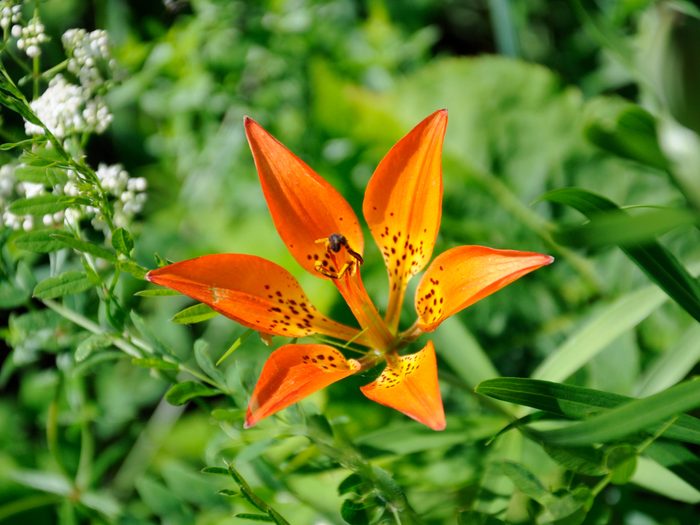
Saskatchewan – Western Red Lily
Thanks to the Saskatchewan Natural History Society, the western red lily became the province’s floral emblem in 1941. Twenty-eight years later, it gained a boost in popularity when it was chosen to appear on Saskatchewan’s flag. (Anthony Drake, a schoolteacher who was originally from the United Kingdom, was responsible for the design.)
Don’t miss this photographic tour of the western provinces of Canada.
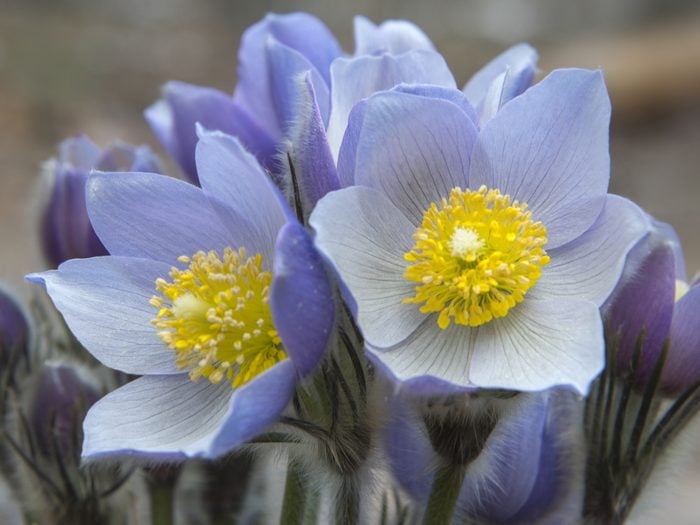
Manitoba – Prairie Crocus
This lovely lavender flower is one of the oldest provincial flowers: it was selected by schoolchildren in a province-wide vote in 1906.
Explore the most stunning botanical garden in every province.
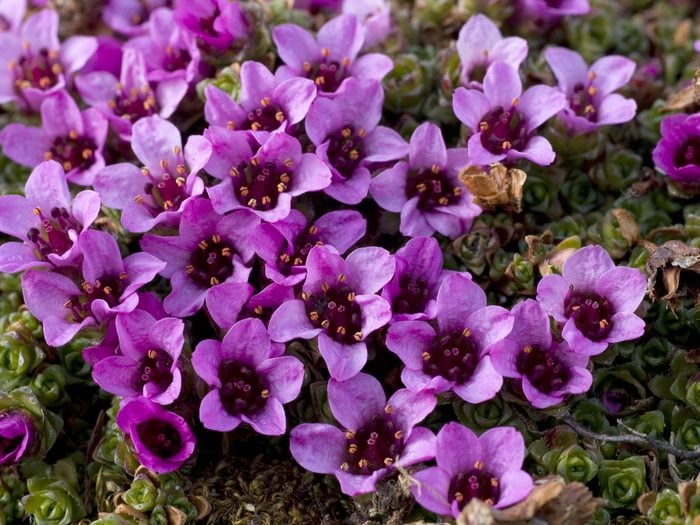
Nunavut – Purple Saxifrage
When Nunavut split from the Northwest Territories in 1999, a vast list of new, important decisions needed to be made—including crowning a new floral emblem. The following year, the Legislative Assembly of Nunavut voted unanimously to adopt the lovely purple saxifrage as the territory’s official flower. (It’s also featured on Nunavut’s coat of arms.)
Check out these mind-blowing Canadian geography facts.
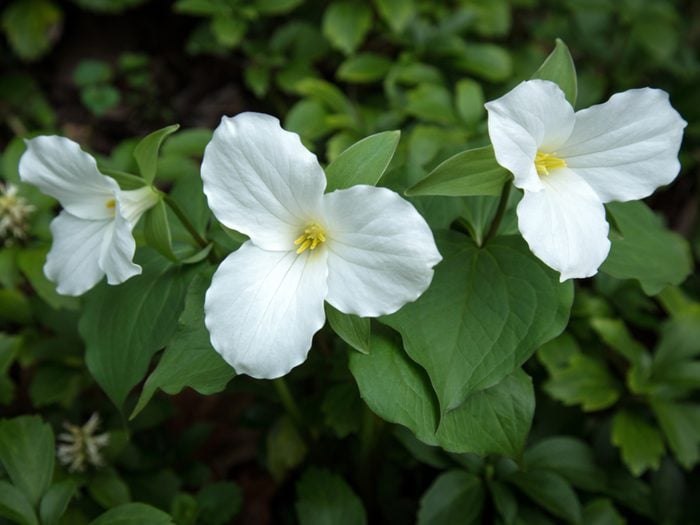
Ontario – White Trillium
Unlike other provincial flowers of Canada, Ontario’s floral emblem is rooted in tragedy: after the First World War, a committee chose the white trillium to be planted on the graves of Canadian servicemen buried overseas. It was not until 1937, however, that the white trillium was adopted as Ontario’s floral emblem. (Contrary to popular belief, it’s not illegal to pick white trilliums—but it’s not recommended, either.)
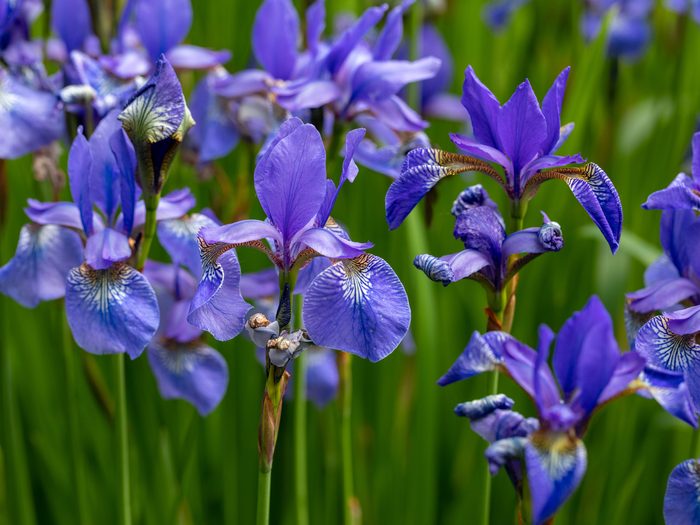
Quebec – Blue Flag
For 36 years, Quebec’s floral emblem was the Madonna lily; to many, it resembled the fleur-de-lis on Quebec’s—and France’s—flag. There was just one problem: the Madonna lily doesn’t grown in Quebec and, as a result, a botanist named Jacques Rousseau began to advocate for a new emblem. In 1999, the province officially chose the native Blue Flag as the Madonna lily’s replacement. (The decision was somewhat cheekily titled, “An Act respecting the flag and emblems of Québec.”)
Here are the 10 historical landmarks every Canadian needs to visit.
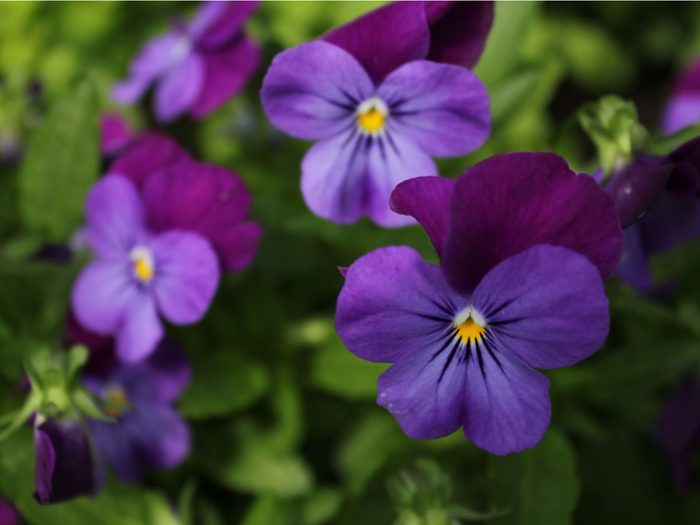
New Brunswick – Purple Violet
The striking Purple Violet became New Brunswick’s official flower in 1936, thanks to input from the Women’s Institute, the Lieutenant Governor and the province’s schoolchildren.
Check out the prettiest covered bridges across Canada.
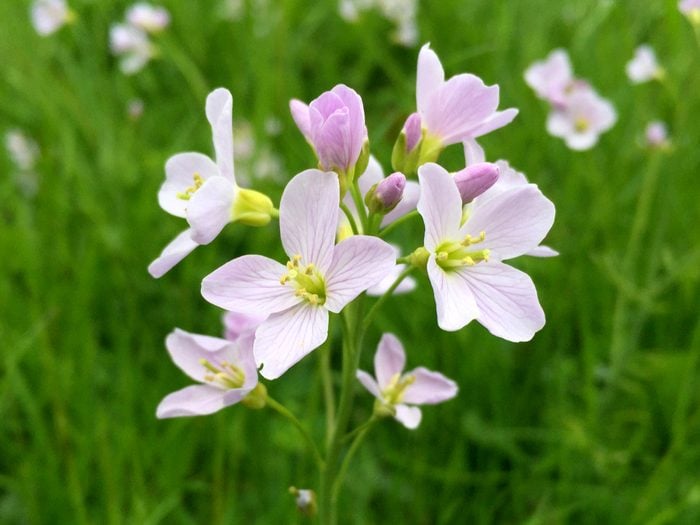
Nova Scotia – Mayflower
Declared Nova Scotia’s floral emblem in 1901, the mayflower is the oldest provincial flower in Canada. Its association with the province dates back even further, however: the mayflower was first used as a decorative motif on the front page of The Nova Scotian in 1825.
Here’s where you’ll find the oldest trees in Canada.
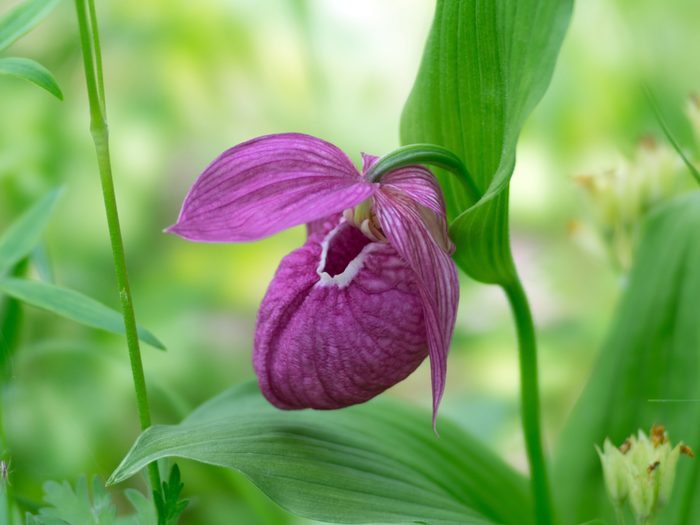
Prince Edward Island – Lady’s Slipper
The lady’s slipper, a botanical cousin of the orchid, has 12 species, three of which are found in Prince Edward Island. (The hardest to find is yellow, with pink being the most common.) It became the province’s floral emblem in 1947.
Here are 10 essential experiences on the east coast of Canada.
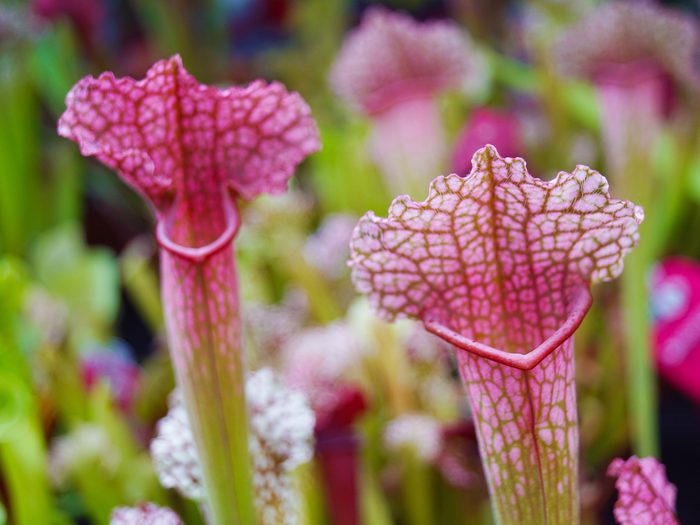
Newfoundland and Labrador – Purple Pitcher Plant
Of all the provincial flowers of Canada, Newfoundland and Labrador’s is unique in that it’s carnivorous! Native to the region, the purple pitcher plant was chosen by Queen Victoria to appear on the newly created Newfoundland penny in 1863. It was officially made the floral emblem in 1954, shortly after the province joined the Confederation.
Now that you know the story behind the provincial flowers of Canada, find out what happened to the Bluenose, Canada’s most iconic ship.